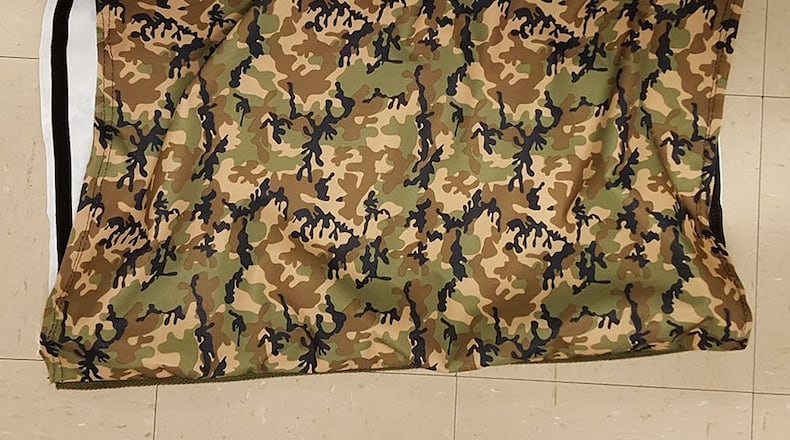“We were provided with a unique opportunity to address a problem and used this as a chance to approach research and development in a non-traditional way,” said J.D. Bales, a mechanical engineer at the AFRL Materials and Manufacturing Directorate and member of the Junior Force Warfighter Operations in RX, or JFWORX, team. “It was a chance to see if a novel business technique could work to help meet a military need.”
Using a process developed by Google called a Design Sprint, in less than one week’s time, the AFRL researchers defined, conceptualized and prototyped a new waterproof medical bag for the National Guard’s 103rd Guardian Angel Personnel Recovery Unit, a team of medics trained in high sea personnel recovery. The project, code named “Med S.W.O.R.D.” for “Medical Supply Waterproof Ocean Rescue Duffel,” provided the Angels with quick-turn prototype solutions for a mission-critical need and gave the researchers a chance to test new ways of innovation and learning in the process.
“The Guardian Angels asked if we could improve the current design of the medical supply bag carried for water recovery missions, which can become waterlogged or damaged by the harsh sea environment. They were looking for a durable, lightweight and waterproof solution that provided easy access to medical supplies, was able to be hung in both helicopters and boats and could remain buoyant in high seas,” said Bales. “This was a great opportunity to test the Sprint process out on an important military project for our warfighters.”
A Design Sprint is a unique approach to a business problem that compresses typically lengthy product development cycles into a five-day process that results in a realistic prototype to meet a business need. By working closely with a customer and moving sequentially through a set day-to-day stage process, teams of innovators utilizing this method create workable solutions at a low-cost to a customer. Small businesses and startups have successfully used this process to move business ideas from conceptualization to product, said Bales, yet its use for military needs is still relatively new.
For the Med S.W.O.R.D. project, Bales assembled a team of seven JFWORX scientists and engineers, both military and civilian, who met at the AFRL’s Wright Brothers Institute located in the Innovation District of Dayton, Ohio.
“We wanted a facility that provided us with resources that could benefit our efforts but also minimized the distractions of our everyday working environment,” said Bales. “WBI is designed and resourced in a way that promotes collaboration and innovation, which is what we would need to be successful.”
The team started on a Monday, and working closely with the Guardian Angels, they narrowed down the requirements for an improved supply bag. This was followed by storyboarding, brainstorming of ideas, narrowing down of workable options, prototype design and a final presentation of the team’s work to the Angels at the end of the week. By closely following the Design Sprint protocol, the team was able to generate a workable solution for a warfighter need at a pace much quicker than traditional research and development typically occurs.
“This was our first time using the Sprint process for an Air Force need. We are quite happy with the end result,” said Bales. “Our prototype is undergoing a few modifications, but we anticipate being ready for operational field testing this summer.”
The new waterproof supply bag will be designed from a waterproof shell material with modular, water-resistant pockets inside for the storage of medical supplies. Transparent pockets will allow operators to see exactly what they may need during mission activities while ensuring additional supplies are protected from water elements. The bag folds for transport and can be hung from helicopters or other rescue vehicles during use.
Though a successful operational need was met through the Med S.W.O.R.D. effort, Bales said the greatest benefit was learning how new business practices could be modified and used in the Air Force laboratory environment. A Design Sprint may not be the best way to address all warfighter needs, but certain projects can benefit from a rapid innovation approach, he said.
“Our mission in JFWORX is to create rapid solutions for near-term warfighter needs. Not only were we able to create a new medical bag, but we have learned a new process that will benefit innovation for years to come,” said Bales. “We are solving problems and spearheading innovative techniques around the lab from the bottom up.”
About the Author
